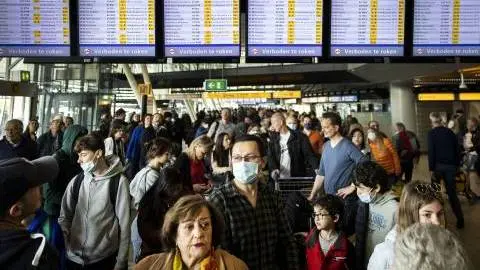3 calls for FX as the dollar stays strong
We're expecting a strong dollar, high volatility, and more central bank intervention in the second half of this year
Dollar to stay strong
FX traders talk of a dollar ‘smile curve’. This is the idea that the dollar strengthens when things are either very good or very bad. And conditions in between would typically see a benign dollar decline. The second half of this year certainly tends to favour events at the extreme end of the smile curve and the dollar staying supported. At one extreme, US growth can hold up such that the Fed can push ahead with tightening, taking the overnight USD rate above 3%. That’s a high rate for the world’s most liquid reserve currency. The alternative is that the US and world economies cannot simply stomach these fast tightening cycles. Here equities correct lower still, perhaps in a disorderly manner. This extreme risk-off environment would see a flight to safety into the dollar even if the Fed tightening cycle were to be cut short. Energy independence stands the dollar in good stead too.
Volatility to stay high
FX volatility is high and is expected to remain so for large parts of the second half of the year. Driving this surge has undoubtedly been the sharp adjustment in interest rate volatility as central banks, in many cases belatedly, respond to the toughest inflation environment in 40 years. Tighter levels of liquidity as central banks tighten policy rates and shrink balance sheets also support larger realised moves in FX rates, as do the latter stages of business cycles. Having at times been under 6% over the last 15 years, EUR/USD implied volatility is now closing in on 10%. We expect these higher levels of FX volatility to be maintained or increased even further in 2H22 meaning that we all need to be prepared for bigger swings in spot FX rates.
Central banks to intervene more
The second half of 2022 should see even more FX intervention from central bankers. We would split this activity into two: defensive and offensive. On the defensive side, many emerging market central banks have been trying to resist local currency weakness through FX intervention. We can think of quite a few central banks in Asia, Latin America and the EMEA region undertaking this activity with various levels of success and various levels of FX reserve adequacy. Expect the stronger dollar to demand more action from this community and greater scrutiny of FX reserve sales and their implications for US Treasuries. The Bank of Japan looks likely to join this defensive camp in 2H22 when USD/JPY pushes above 140. Into the offensive camp go the likes of the Swiss National Bank and Czech National Bank, which are selling FX to drive local currencies higher and tighten monetary conditions. More central bank FX intervention will also maintain higher FX volatility levels.
Download
Download article
7 July 2022
ING Monthly: Europe’s recovery is cancelled This bundle contains {bundle_entries}{/bundle_entries} articlesThis publication has been prepared by ING solely for information purposes irrespective of a particular user's means, financial situation or investment objectives. The information does not constitute investment recommendation, and nor is it investment, legal or tax advice or an offer or solicitation to purchase or sell any financial instrument. Read more
